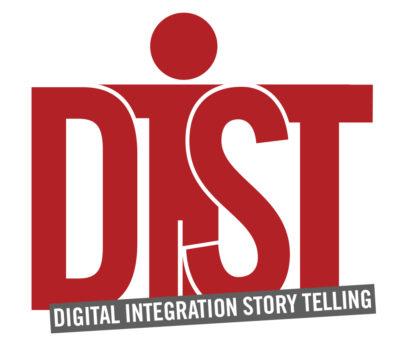 DIST will generate results in accordance with three main project phases and two cross cutting Intellectual Outputs which will continue along these phases.
DIST will generate results in accordance with three main project phases and two cross cutting Intellectual Outputs which will continue along these phases.
The three phases are called: Fundamentals, Competences, Use. The 1st phase mainly deals with preparing the conceptual and methodological basis of the project and will be concerned with the discursive establishment of the conceptual framework and network building and intensification. The 2nd phase mainly deals with building up competences within and around the project staff and the closer network. The 3rd phase is focused at classrooms, i.e. creating digital stories and using existing digital stories in class. This includes the further dissemination and exploitation in concern of further schools, teachers, teacher trainees and other stakeholders.
The two Intellectual Outputs are called: (1) iStories and (2) Classrooms. The main functions of the two IOs is (1) to create digital stories to be provided on the website and (2) to create concepts, materials etc. for classroom usage including building up a pertinent network for that.
1) In the 1st Fundamentals phase DIST will yield the following results:
a) topical analyses of national migration contexts as well as explorative interviews with inclusion practitioners (social workers, teachers, administrators, volunteers, migrant representatives …) and with people undergoing integration and are ‘activists’ in a broad sense, i.e. mainly but not only adults (this belongs to IO1). Editing parts of the videos for web presentation to give a broader picture of the project to given and potential partners on school level.
b) Development of the DIST framework: particularly an initial list of topics for stories both in concern of national specificities and general problems in order to generate specific added value from the intercultural transfer of the stories produced later (IO1); definition of adequate formats of digital stories and adequate easy to use technology will be part of this basic DIST framework.
c) Network building with schools and further stakeholders (already the interviews themselves are part of the networking process) particularly in order to define school partners for the different (exploitation) activities (IO2).
2) In the 2nd Competence phase DIST will yield the following results:
a) Conduct of workshops with staff (as well as where suitable teacher trainees) to train digital storytelling within the DIST framework and conduct the storytelling and produce/edit multimedia on exemplary basis, e.g. videos or slide shows, scribbles/comics, animations, explainity videos, photo narratives etc. (IO1). The first workshops (C1, 3 and 6) will be done by PHFR, LU, El and AdM together in order to develop common didactic and technological expertise afterwards these partners will (test to) transfer this expertise by guiding bilaterally the staff workshops (C2, 4 and 5) at the other partners (from PH FR to FZHH; from LU to ELC; and El, as didactic expert, will also take part at AdM). This will also provide information about the transferability as such. This common mutual process is thus designed to develop and share the competencies for the further local/regional dissemination and exploitation.
b) Based on the experiences of the staff workshop series the DIST framework will be complemented by a transfer guide and edited for ‘external’ use (IO1)
c) Implementation of website and video channel for dissemination or videos etc. and manuals (IO1)
3) In the 3rd Use phase DIST will yield the following results:
a) Production of a broad set of digital stories within the local/regional school networks of the partners – from both sides, i.e. from students with and without migration background – based on the exemplary stories from the staff workshops and on the DIST framework for external use – guided by DIST staff (IO1) Dissemination of digital stories on website. Particular examples (dealing with general and inter-culturally interesting problems) will be translated into the other project languages.
b) Initializing of school partnerships based on the exchange of stories (IO2)
c) Refinement of the DIST framework as teacher manual with tutorials, so they can use the methodology (also independently of the migration context) to produce digital stories, i.e. storytelling interview methodology, basic web editing (IO2).
d) Test and definition of national classroom scenarios on how to use (existing) DIST stories for better understanding and pluralistic integration. Dissemination of classroom scenarios in partner languages on website (IO2).
e) Local/regional courses for further staff, teachers and trainees (also from wider network) on how to produce and use DIST videos etc (IO1).
f) Deepening of the network based on the different DIST outcomes in order to improve their sustainable exploitation by different stakeholders in regional networks including schools etc. (IO2)
All the outputs include evaluation measures.

